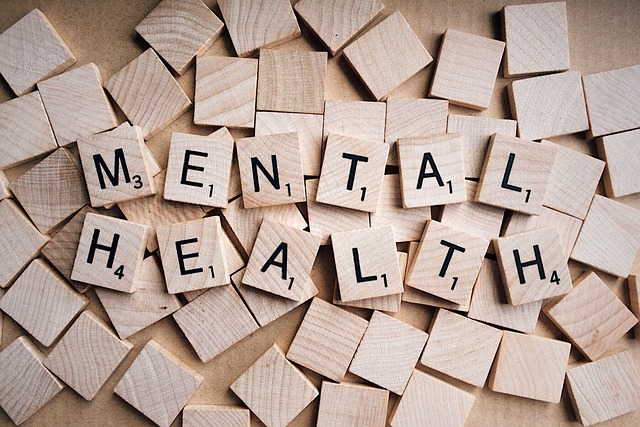Rapid-response teams aid troubled youths in New Jersey – but funding limits Maryland’s similar effort
By COLIN McNAMARA
A young New Jersey girl tormented others in her kindergarten class. Alienated from her classmates, she physically attacked other students and colored the bathroom walls with a permanent marker.
Access to mental health care was complicated in her rural county, and school officials considered suspending the 6-year-old. That was when the school notified New Jersey’s Mobile Response and Stabilization Services — an urgent response system built to aid those in crisis without sending them to the emergency room or getting the police involved.
The rapid response provider worked with the girl and her family over eight weeks to find the treatment that best fit them. A year later, the girl’s behavioral issues — which stemmed from her home — nearly disappeared, according to Liz Manley, a former New Jersey mental health specialist who recounted the child’s story.
Manley said the girl transformed from a smart kid with few social skills to one of the most popular first graders in the school, with her classmates now eager to come to her birthday party.
“We found out there [was] a lot going on at home,” said Manley, who now serves as a senior advisor for health and behavioral health policy at the University of Connecticut School of Social Work’s Innovations Institute. “The father [had] a new job. He [wasn’t] around as much; he [had] to work a lot. Their other children were struggling and just needed some time. They’re not big things; these are just normal things that happen.”
Without the help of rapid response, that young girl could have been suspended from school or sent to an emergency department to receive inpatient care, even though that type of high-intensity treatment was not needed, Manley said.
The young girl’s story serves as a lesson learned for Maryland, which began to implement a rapid response program similar to New Jersey’s in 2022 but lacks the funding necessary to provide the same comprehensive statewide care.
It’s also a lesson for the nation. In the 2021-22 school year, 67% of public schools in the U.S. reported having at least one violent incident, according to a survey from the National Center for Education Statistics. One in six children aged 6-17 in the U.S. experiences a mental health disorder each year, according to 2021 data published by the National Alliance on Mental Illness.
Mobile response has proven to help. A 2019 study published in the Psychiatric Services journal found that when compared to other troubled youths, those treated by mobile response teams stood a substantially lower risk of suffering a crisis culminating in an emergency room visit.
That being the case, the Bipartisan Policy Center issued a report in January advocating an expansion of mobile response teams to serve youths nationwide.
“The primary objective is to deliver community-based support and immediate assistance to families facing behavioral health crises related to their children, with a focus on de-escalation and stabilization within the home and skill-building,” the report said.
Better than 911
Mobile response aims to steer clear of the problems that can occur when parents call 911 in response to a child’s behavioral health crisis. In such cases, police typically respond, but not all are trained to handle such situations.
“Just their very presence can make the situation worse,” said Ann Geddes, director of child and older adult policy at the Mental Health Association of Maryland. “If they need to go to the hospital, sometimes the child is taken in handcuffs in the police car, which can be incredibly traumatizing to a child.”
Once at the hospital, children could wait hours to be screened, during which the situation could deescalate and the child may be sent home without any care, even if they needed it.
In some instances, families called the police 10 times over a few months and were caught in a revolving door of inadequate care because a mental health professional never met with the family during their time of need, Geddes said.
For children who needed hospitalization, it could still take months to get a bed, and even after they get one, their symptoms could worsen because they are separated from their parents, she added.
Manley agreed. “In behavioral health, that [child] is separated from their parent, as if the parent is the bad guy,” she said, “and the parent of the [child] is not the bad guy. They need the ability to be identified as part of the solution.”
The New Jersey way
Every state that offers mobile response has a different step-by-step process. But in most places, mobile response isn’t specifically targeted to troubled youth. According to a 2023 survey funded by the federal government, 85% of mobile response providers nationwide serve all ages, while 11% serve only adults and 4% focus solely on children.
Many mobile response programs face problems, too, according to an analysis of the survey data by NRI, a nonprofit dedicated to mental health research. In 30 states, agencies reported staffing shortages, and in 13 states, providers said it was difficult to establish mobile response teams in rural areas.
Against that backdrop, New Jersey’s Mobile Response and Stabilization Services for families is seen as the national gold standard, Geddes said.
If a child experiences a behavioral health crisis in New Jersey, the parents’ first step is to call a state hotline. The person who takes the call first makes sure it is not an emergency — in which 911 would be notified — then takes down information about the situation before transferring the caller to a nearby mobile response provider.
The provider arranges a time and place to meet with the family, which could be within an hour or later that day, depending on the family’s needs. The mobile response team assesses the situation and recommends which form of care — such as medication or therapy — is best and links the family to the appropriate service.
Team members then meet with the family weekly for eight weeks to make sure the treatment is effective. After the eight weeks, the mobile response team communicates with the family to figure out the best next step.
The team does not follow a script. Instead, everything is based on what the family and child need.
“Mobile response will act like a conductor in an orchestra,” said Danielle Perri-Gasperini, division director of children’s services at CPC Integrated Health in New Jersey. “Our job is really to make sure everybody’s on the same page and no one’s working in a silo. So, if there’s a doctor involved, or a therapist involved, or a school counselor, we’re going to reach out to all those people, loop everybody in [and] make sure everybody’s on the same page.”
Signs of success
New Jersey pioneered the first statewide effort to provide mobile response to youth mental health crises, rolling out its effort from 2001 through 2006. Statistics indicate New Jersey’s effort has been a success.
In 2023, 32,896 unique youths were served by mobile response teams across the state — nearly 11,000 more than in 2020 — and 97.5% remained in the same living situation from the start to the end of their mental health service, according to the New Jersey Department of Children and Families. As of Sept. 30, 2021, New Jersey also had the fewest children in foster care per 100,000 residents at 143, according to USAFacts, a nonpartisan data collector.
Additionally, only 19.4% of adults in New Jersey experienced any mental illness in 2022, the lowest in the country, according to Mental Health America.
“You don’t get to fix the adult system unless you fix the kid system,” said Manley, who noted that according to the National Alliance on Mental Illness, three-fourths of all adult mental health challenges start before the age of 24.
During Manley’s time at the New Jersey Department of Children and Families, officials from more than 20 states — including Maryland — visited New Jersey for ride-alongs and to see how response teams operated there.
Mobile response is just one piece of New Jersey’s success, Manley said. The state also offers youth and parent peer support for families impacted by a behavioral health crisis and intensive care coordination, which prepares youth for high-intensity services. Maryland has yet to implement either.
“If states only do one, it’s like a three-legged stool,” Manley said.
Maryland’s challenge
Maryland began implementing mobile response in 2022, but the effort started with only eight of the 23 counties, not including some of the state’s largest jurisdictions: Baltimore City, Baltimore County, and Montgomery County. The state’s effort is so new that there is not yet any data to evaluate its performance, Geddes said.
Limited funding has significantly hampered Maryland’s implementation process, she added.
Even the eight counties in the state’s pilot mobile response program — Allegany, Garrett, Frederick, Harford, Dorchester, Kent, Queen Anne’s and Washington — do not have the resources to support the program fully, Geddes said. Ideally, the service is a free statewide program that operates 24/7 and guarantees a response within an hour of the initial phone call, but Maryland does not have the funding to support either.
But iMind Behavioral Health has emerged in the past year as a mobile response provider in Prince George’s County — Maryland’s third-largest jurisdiction — after receiving a $3.5 million grant from the state’s new program focusing on youth mental health.
“It’s been very instrumental in allowing us to provide a significant amount of training for our staff and to implement, essentially, a very robust model,” iMind CEO Steven Flynn said of the local funding.
iMind uses a similar mobile response process to New Jersey, providing 24/7 care and typically responding to calls in 45-60 minutes. iMind responds to more than 100 crisis calls per month in the county.
Although iMind would be open to expanding in Maryland, the organization’s focus remains on providing quality care in Prince George’s County, Flynn said.
Maryland’s mobile response effort is not funded by a singular bill or source. Much of its budget — $15 million — came from federal pandemic relief funding that ran out this year. That’s forcing mental health advocates to push for funding in an increasingly tight state budget.
The New Jersey Department of Children and Families expects mobile response to cost the state more than $36 million in 2025. Manley said a full statewide program could cost Maryland even less, given its smaller population and geographical coverage.
She also said fully implementing mobile response could save the state additional money by cutting down on emergency department visits and inpatient care.
Juvenile detention costs could drop, too. New Jersey closed multiple youth detention centers since 2006, with the state’s largest set to close within the next few years, New Jersey Attorney General Matthew Platkin announced in July.
In Maryland, though, many state officials don’t fully understand mobile response and its impact, both financially and on children, Manley said.
“We say it’s too expensive to do that, and yet, we have no problem spending lots of money for young people to end up in the wrong places that have lifelong consequences,” she said.
Geddes said the state first has to find the funding to sustain the pilot programs now underway in nine counties. But with the state facing a budget crunch prompting the General Assembly to make $2.5 billion in funding cuts overall for fiscal year 2026, Geddes acknowledged that any expansion may take some time.
“It’s something aspirational, but it’s not done quickly – especially [with] the funding right now,” she said.. “I mean, the state is in a fiscal crisis right now.”

Capital News Service is a student-powered news organization run by the University of Maryland Philip Merrill College of Journalism. With bureaus in Annapolis and Washington run by professional journalists with decades of experience, they deliver news in multiple formats via partner news organizations and a destination Website.

